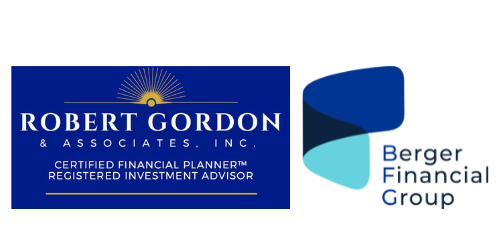Year-End Financial Checklist
Submitted by Robert Gordon & Associates, Inc on December 24th, 2019
10 Essential To-Do's to Wrap Up Your 2019 Finances.
#10 Use any remaining flexible spending account balances.
Make sure you use up any remaining funds in your health spending accounts, flexible spending accounts for child care and dependent care and transportation accounts. Typically, the expenses you are reimbursing yourself for must have occurred in 2019.
Some plans offer greater flexibility. Check to see if your plan allows you to file for reimbursement of 2019 expenses after the start of the new year (funds typically give you 90 days to file). Plans may also allow you to roll funds over for use in 2020 or allow you to use 2019 dollars to pay for expenses that you incur in 2020.
#9 Maximize the employer matching contribution at work.
If you are lucky enough to have an employer that will match your retirement contributions, make sure you are taking full advantage of this every year.
#8 Max out your IRA or ROTH contribution.
The maximum contribution into an IRA or ROTH for 2019 is $6,000. If you are over age 50, you can put an additional $1,000 catchup contribution for a total of $7,000. This is a great first step for individuals that don't have an employer sponsored retirement plan or a great next step after you have taken full advantage of your employer matching contribution. You can make a 2019 contribution to an IRA or ROTH up to the tax deadline in 2020.
#7 Make charitable contributions now to get 2019 tax deductions.
Donations must be dated before Dec. 31. Stock donations to charities must be completed by then, too. Tangible gifts must also be received by the charity by Dec. 31 as well — make sure to keep a detailed list of what was donated for any gifts of this type. If you think you may be in a lower tax bracket next year, you may want to consider accelerating your charitable contributions to this year to get more money from deductions.
#6 Reimburse yourself for college expenses from your 529 college savings plan.
The expenses you are reimbursing yourself for this year must have occurred in 2019.
#5 If you are in business for yourself, set up a solo 401(k).
These accounts are also known as a Self Employed 401(k) or an Individual 401(k). This can help you save a great deal on taxes and maximize your retirement savings. You must set these accounts up by Dec. 31.
#4 Carry out transactions that can lower your 2019 taxes.
Review your portfolio and consider selling stocks or funds that have decreased in value at a loss. If you sell a stock or a fund at a loss, you can write off those losses on your taxes against any gains. Also, check on medical expenses and other tax deductions. You can only deduct certain expenses after they exceed a certain percentage of your Adjusted Gross Income (AGI) — e.g., medical expenses must exceed 10 percent of your AGI — so you may want to accelerate those payments into this year or push them out until next year.
#3 Consider making financial gifts to your children or grandchildren.
You can give up to $15,000 to any one person each year without paying a federal gift tax. For example, you could give $15,000 to your daughter and $15,000 to her husband, and your spouse could do the same, for a total of $60,000 ($15,000 x 4).
If you go above that limit, say $50,000 to help a child with a down payment on a home, you most likely won’t have to pay more taxes, but you will have to file an additional form with the IRS: the Gift Tax Form 709. For couples filing a joint return, the gift tax form threshold is $30,000 for an individual when the money is coming from separate accounts from the husband and wife.
#2 Consider whether you should withdraw funds from your individual retirement account (IRA).
If you are over 70½ or have an inherited IRA, you must take money out as a Required Minimum Distribution (RMD) based on age and marital status. If you don’t take out enough, the IRS will fine you 50 percent of the amount you were supposed to withdraw but didn’t. That is in addition to the taxes you already owe on the distribution. So, if you didn’t take out $10,000 that you were supposed to on the RMD, the IRS can take away $5,000.
If you are over 59½ and in a bracket this year that is lower than normal, consider taking money out of your account this year. Just make sure you don’t take out an amount that would bump you into a higher tax bracket.
#1 Seek the advice of a CFP® (Certified Financial Planner).
Talk to a CERTIFIED FINANCIAL PLANNER™ Professional about your financial goals for 2020 and beyond. A CFP® is legally required to make recommendations in your best interest, and can work with you to create a personalized financial plan to help you achieve financial freedom and the secure retirement you deserve.

